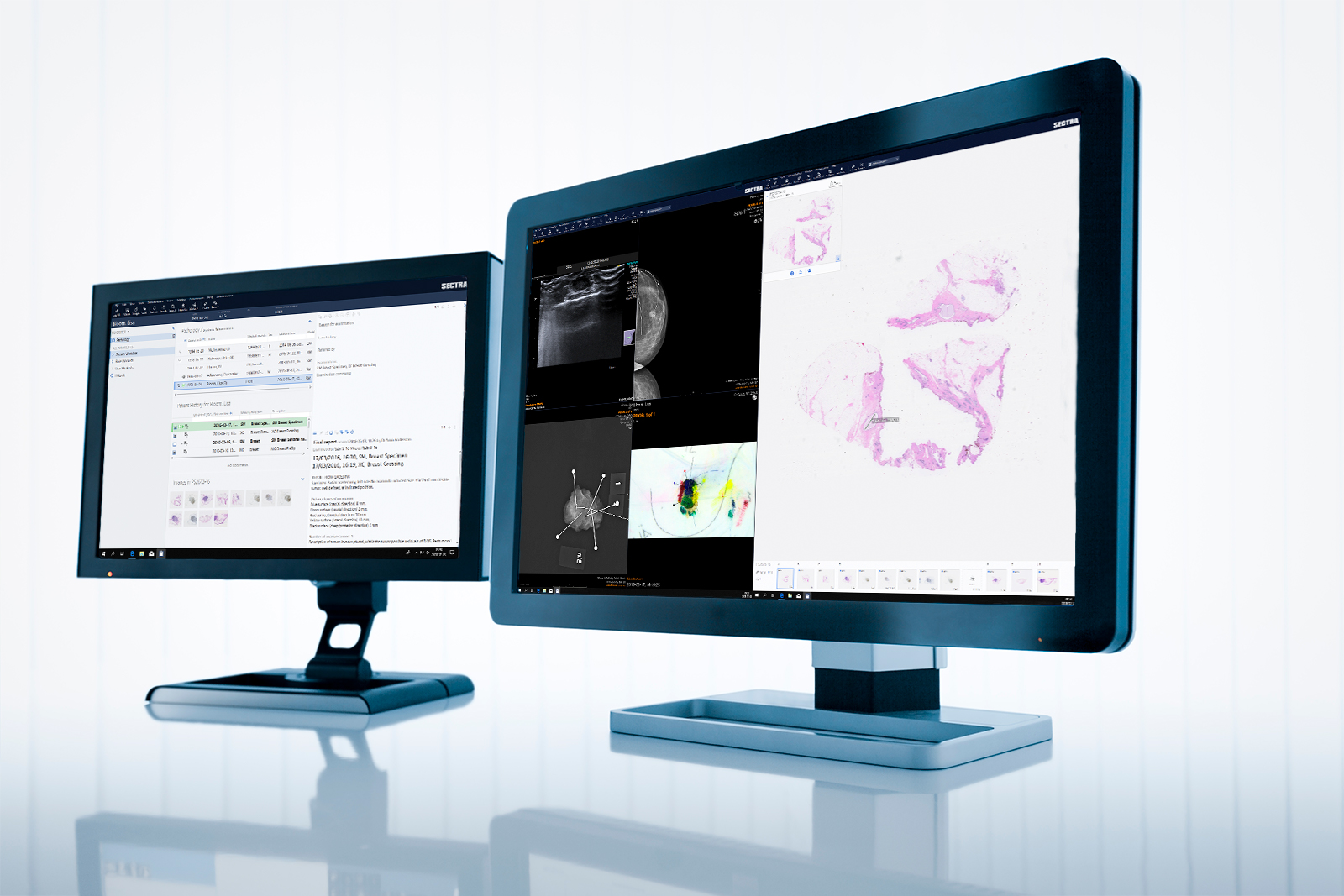Digital pathology has great potential to increase the efficiency and quality of anatomical pathology. A good digital workplace supports the daily work in everything from simple tasks, such as combining images with the corresponding patient data, to more advanced tasks, such as applying image analysis tools. But it is important to note that digital pathology involves so much more than simply looking at a digital image. Used properly, it can, for example, offer workflow support with well-adapted worklists, make it possible to prioritize which cases to start with or enable the use of speech recognition. It can also enable increased efficiency in internal case reviews, as well as collaboration between departments, hospitals, regions or even nations. However, and this is a significant factor, to reach the full potential of a digital workflow it is imperative that the hardware and software involved are integrated and able to share information about clinical background, images and reports.
In radiology, a specialty where digital review is already the gold standard, standardized integration protocols are expected by companies and customers. Images are stored according to DICOM protocols and communication between systems is often handled by HL7 messages. The use of standards greatly reduces the time and cost for integrations. Unfortunately, digital pathology still has some way to go when it comes to supporting standard integration protocols and understanding the need for proper integration between the systems involved.
Using standards-based integration offers several advantages over proprietary integration. It reduces the cost of implementation and management, along with making future changes easier and integration with other facilities more likely. Sectra promotes an IHE (Integrating the Healthcare Enterprise) approach to integration. Where needed, a proprietary middleware is used, but we strive to find a standardized internal interface on our backend services to make the move from proprietary to standards-based integration as seamless as possible. We strongly believe in an openness to integrating with other software to provide customers with the richest work environment possible. Good integration also has the potential to speed up the adoption of digital pathology as it offers a better workplace for the pathologist with a richer experience, including full access to clinical information, as well as patient history in text and images. It paves the way for best practice workflows for anything from reviewing or reporting to education or planning tumor boards.
Digital pathology is currently lagging behind when it comes to adopting standards, and the preparedness to integrate varies significantly between software. To drive this adoption, it is important that customers demand and expect standard integration protocols, as well as image storage protocols. If done properly, this will ensure that the digitization of pathology takes less time than the 15 years or so it took to digitize radiology.
Four tips on important demands to impose on your suppliers
- Participate in the creation of a detailed description of the planned workflow to understand needs for integration.
- Ensure that your LIMS vendor can and will integrate with pathology imaging solutions from any vendor. Choose standards-based integration over proprietary integration.
- Ensure that your pathology imaging solution and scanner support standard storage protocols and file formats, such as DICOM for WSI.
- Coordinate changes with vendors from all affected systems in advance.

